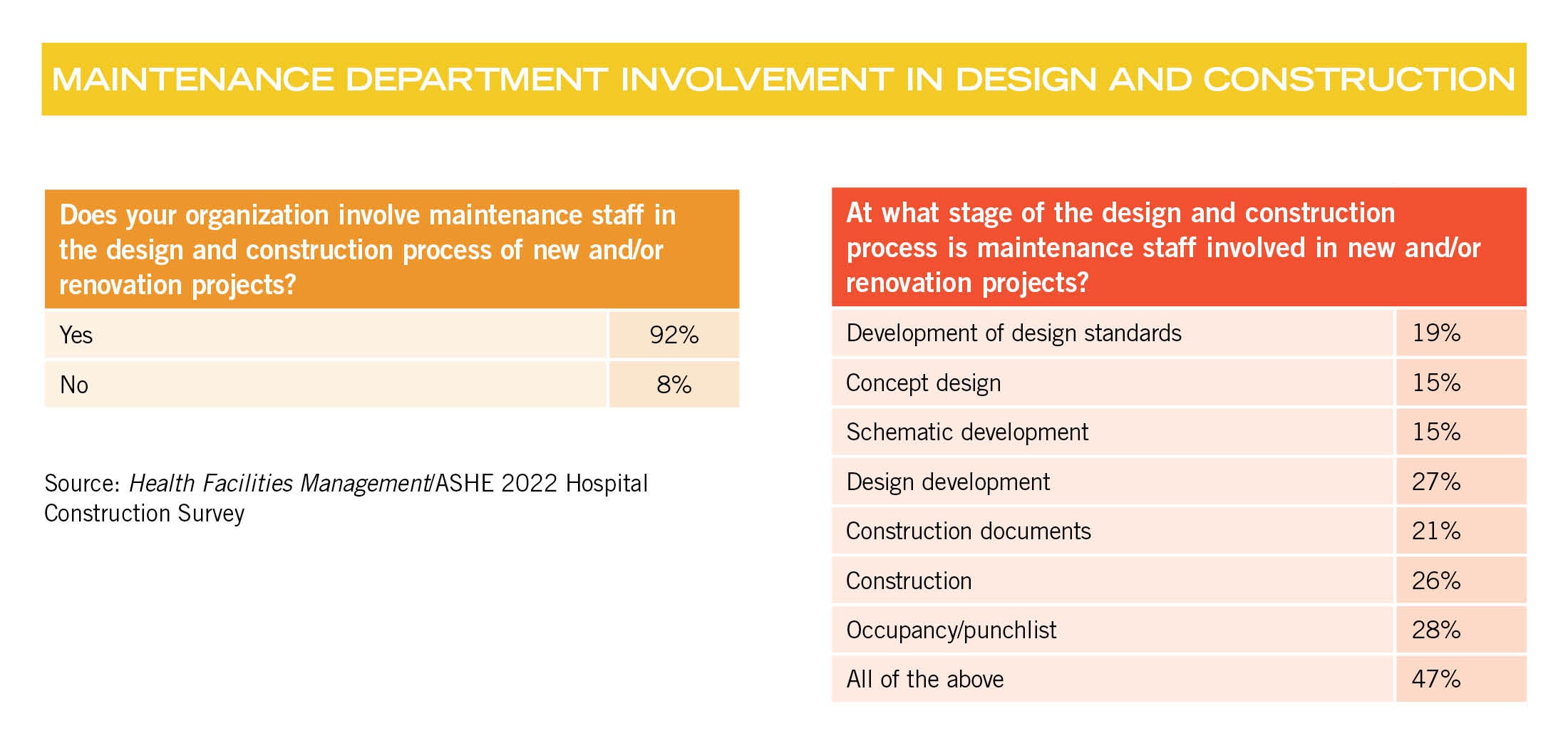Maintenance staff plays key design and construction role
As the eyes and ears of the hospital, maintenance staff can give critical input on designing the facilities they oversee on a day-to-day basis.
Recognizing that value, a vast majority of hospitals are including maintenance staff in the design/construction process, according to the 2022 Hospital Construction Survey conducted by the American Society for Health Care Engineering’s (ASHE’s) Health Facilities Management magazine.
Respondents shared success stories anonymously for the survey that showed 92% of hospitals include maintenance staff in the design/construction process.
One hospital planning a large conference room changed its design when the maintenance staff suggested splitting HVAC systems and adding an accordion divider to maximize use for multiple small and/or one large gathering.
Said another respondent: “By involving the maintenance staff on a computed tomography replacement and room renovation, we were able to budget for the lack of proper HVAC in the area and avoid costly overruns.”
Another added: “Being a relatively small rural acute care hospital, the maintenance staff are all skilled trades and are very involved in the entire construction process.”
While designers, architects and contractors have long had a seat at the design/construction table, maintenance staff has not always been part of the process.
“When I got into health care as a tradesman 25-plus years ago, we often were not involved until it was time to get trained on the new equipment that was already installed and running,” says ASHE President Shadie (Shay) R. Rankhorn Jr., SASHE, CHFM, CHC, senior director of facilities management at Quorum Health, Brentwood, Tenn.
Since then, hospitals have learned the hard way that maintenance input can avoid duplication of efforts, prevent costly errors and ensure standardization throughout the facility, among other benefits.
Essentially, maintenance input helps hospitals get design/construction projects right the first time.
“The role of maintenance staff in design and construction has become bigger and more important over the years,” says Chad E. Beebe, AIA, CHFM, CFPS, CBO, FASHE, deputy executive director of ASHE. “Hospitals know that including the input of maintenance staff helps ensure the efficiency and long-term value of the system, potentially saving millions of dollars.”
Staff who know every inch of the building can give valuable input on everything from complex hospital operations and floor layouts to choosing products, vendors and equipment.
“Maintenance staff are typically able to see constraints in utility systems before they are inadequately designed by engineers who may not have accurate information regarding existing conditions because of small changes added over time,” said one respondent.
As COVID-19 continues, maintenance staff are drawing on years of expertise to meet multifaceted challenges related to creating a safe environment for patients and staff.
“During the design of a bone marrow transplant suite, maintenance staff were able to point out issues with the proposed HVAC system design and the need to include a separate air handler in the design,” said one survey respondent.
As more hospitals realize the value of including maintenance input from a design, cost and patient perspective, their role will only continue to grow.
One respondent summed it up: “Design and construction own the project for a few years. Maintenance staff owns the project for decades.”





